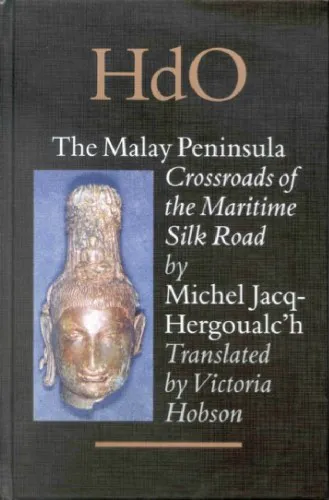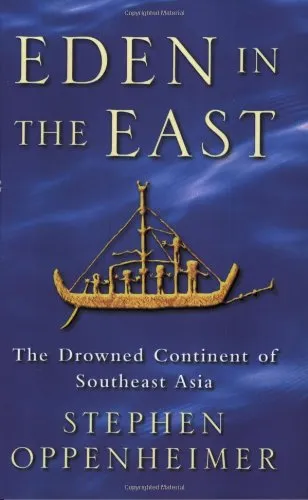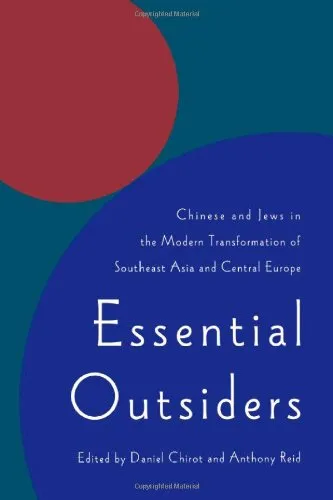The Malay Peninsula: Crossroads of the Maritime Silk Road (100 BC - 1300 AD)
4.0
Reviews from our users

You Can Ask your questions from this book's AI after Login
Each download or ask from book AI costs 2 points. To earn more free points, please visit the Points Guide Page and complete some valuable actions.Related Refrences:
The Malay Peninsula: Crossroads of the Maritime Silk Road (100 BC - 1300 AD) offers an intricate exploration of one of the world's most significant and fascinating crossroads in the ancient trade network. Through a rich tapestry of historical narratives, archaeological findings, and cultural analyses, this book delves into the profound impact of the Malay Peninsula on global trade and cultural exchanges from 100 BC to 1300 AD.
Detailed Summary of the Book
The book starts with an exploration of the geographical significance of the Malay Peninsula, underlining its pivotal position between the Indian Ocean and the South China Sea. This unique location made the region a bustling hub for traders, explorers, and various cultures that traversed the Maritime Silk Road over centuries.
Each chapter is dedicated to a specific era or thematic aspect of the Peninsula's history. Beginning with the early influences of Indian traders and the spread of Hinduism and Buddhism, the narrative swiftly moves to the impact of Chinese trade and the subsequent adaptation of various cultural elements. The story further unfolds to cover the emergence of powerful maritime kingdoms like Srivijaya, which played crucial roles in governing trade routes and fostering regional prosperity.
Archaeological evidence, such as inscriptions, pottery, and city ruins, is meticulously examined to provide insights into daily life, religious practices, and the socio-political structures that existed. Through these discoveries, the reader gains an understanding of how the interactions between different civilizations led to a blended cultural heritage that persists in the region today.
Key Takeaways
- The strategic importance of the Malay Peninsula as a maritime trade crossroads was instrumental in the cultural and economic exchanges between East and West.
- Interaction with multiple cultures led to a unique synthesis of art, religion, and governance, which had lasting influences throughout Southeast Asia.
- The rise and fall of powerful maritime empires, such as Srivijaya, highlight the dynamic and sometimes volatile nature of ancient trade networks.
- Archaeological and historical research significantly contributes to our understanding of ancient globalization processes along the Maritime Silk Road.
Famous Quotes from the Book
"The waters that pass through the Malay Peninsula have witnessed the ceaseless flow of goods, ideas, and beliefs, shaping not just a region, but the entire course of human history."
"To navigate the Maritime Silk Road was to engage in an ancient dialogue between cultures, scripted by the stars and spoken through trade winds."
Why This Book Matters
This book holds immense value for historians, archaeologists, and enthusiasts of ancient trade and cultural exchanges. By shedding light on the often-overlooked significance of the Malay Peninsula, it fills a crucial gap in the understanding of pre-modern globalization. Readers will find themselves immersed in a vivid and scholarly exploration of a region that functioned as a vital conduit for the transmission of commodities and cultural practices that have shaped the modern world.
In an era where global connectivity is often discussed in digital terms, The Malay Peninsula: Crossroads of the Maritime Silk Road serves as a poignant reminder of the age-old human desire for exploration and exchange. Its careful documentation and engaging storytelling make it a timeless contribution to the literature on global history and cultural heritage.
Free Direct Download
You Can Download this book after Login
Accessing books through legal platforms and public libraries not only supports the rights of authors and publishers but also contributes to the sustainability of reading culture. Before downloading, please take a moment to consider these options.
Find this book on other platforms:
WorldCat helps you find books in libraries worldwide.
See ratings, reviews, and discussions on Goodreads.
Find and buy rare or used books on AbeBooks.
1386
بازدید4.0
امتیاز0
نظر98%
رضایتReviews:
4.0
Based on 0 users review
Questions & Answers
Ask questions about this book or help others by answering
No questions yet. Be the first to ask!














